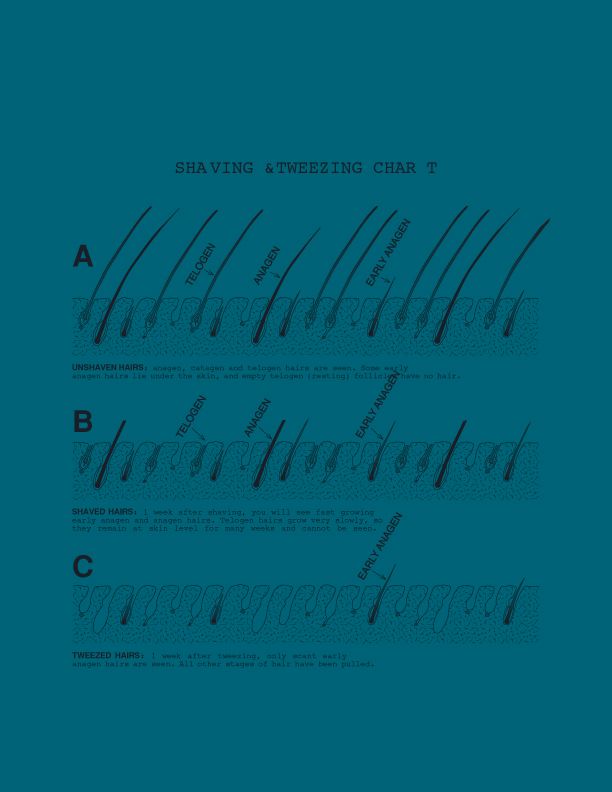I’m also a proponent of treating all hairs, whatever their growth stage. However, there is an advantage in doing the “anagen only” system: fewer “tombstones.”
(For our patients): A tombstone is a non-viable remnant hair that looks like a very dark “sliver” protruding from the skin. They eventually wash away, but can be lifted out of the skin with zero traction. They typically arise when a telogen hair is properly treated and a new, not yet surfaced, anagen hair in the same follicle is collaterally destroyed. In certain body areas tombstones can result in an untidy appearance. Such as the legs.
I started working on 26-year-old Cindy’s legs in November. Each time she comes, I rapidly clear off all the anagen hairs only; it takes about an hour for each leg. (Using manual blend, the hairs epilate in 1-2 seconds and she requires no anesthetic.)
After each clearing, she mentions how clear her legs look. Then, I ask her to gently stroke her skin. Of course she feels the hundreds of prevously-shaved telogen hairs that are still not easily visible. She usually says: “Oh my God, all those hairs are still there!”
And, yes they are! After 3 full months of “clearances” Cindy is still able to experience what electrologists know: TONS of telogen hairs just waiting to sabotage the clear skin! It’s kind of nice really … from an operator’s point of view. I don’t get any “Qvetching” about regrowth!
Had I spent time zapping the telogen hairs, I would also be creating tombstones that later would be a bit unsightly. Nicely, Cindy is very persistent and comes in every 2 weeks or so. Indeed, each time there are fewer telogen hairs but they are still abundant. Our goal is to achieve, finally, a clearance with a smooth feeling: then, we will be on the road to rapidly finishing this project.
She should be completed in another 10 hours: making it 25 hours for the entire job. (I posted a photo of her some time ago. Her hair is as dense as I have ever seen on a woman.) It’s also nice to remove only anagen hairs because they slide out so easily and are easy to grab (I do the two-handed “progressive epilation” technique.)
Cindy is stunningly beautiful and has drop-dead amazing legs (can I say that?) This added bonus of clear, hairless legs is going to advance her self-confidence. Watch out world, summer, and Cindy, is coming!


